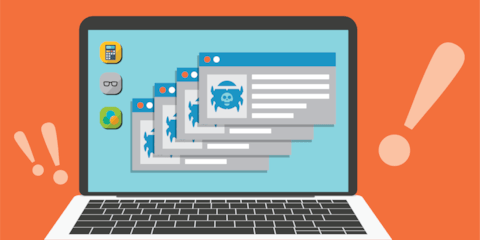Picture your inbox. It’s like an overflowing river of emails – work updates, those “you’ve won!” newsletters, reminders from social media. But beneath this digital current there is a hidden danger zone: hackers trying to crack into your email and malware waiting to pounce, disguised as harmless messages.
These online threats can steal your personal information, wreak havoc on your computer, and leave you feeling like someone just invaded your privacy. By following a few steps, you can transform your inbox from a feeding ground for scammers into a safe zone.
Understanding Phishing Scams
Imagine this: you receive an email that appears to be from your bank. It warns of suspicious activity on your account and urges you to click a link to verify your information. This is a classic phishing scam, a cunning attempt to lure you into revealing sensitive details like passwords or credit card numbers. Scammers craft emails that mimic legitimate sources – banks, credit card companies, even popular social media platforms. They prey on our trust and sense of urgency, hoping we’ll click the link without thinking twice.

Malware: Different Threats, Different Disguises
Phishing scams aren’t the only danger lurking in your inbox. Malware, malicious software, can also arrive disguised as email attachments or download links. They come in various forms:
- Viruses: Think of them as digital parasites that spread from one computer to another, often through email attachments. Once opened, they can corrupt files, steal data, and even disable your computer.
- Spyware: These programs lurk in the background, monitoring your online activity and stealing personal information like passwords and browsing history.
- Ransomware: Imagine this – you open an email attachment, and suddenly your computer files are locked away. The scammer demands a ransom payment to unlock them, leaving you desperate and out of pocket.
Protecting Yourself from Email Threats
So, how do we fortify our inboxes and keep these digital nasties at bay? Here are some defense strategies:
- Be a Skeptic: Don’t be fooled by urgency or fancy logos. Always question the legitimacy of an email, especially if it asks for personal information or urges you to click on a link. If something seems too good to be true, it probably is.
- Verify, Verify, Verify: Hover over any links in the email. A legitimate link should display the actual website address before you click. Never click on suspicious links, even if the email appears to be from someone you know. Phishing scammers can cleverly spoof email addresses.
- Don’t Open What You Don’t Know: Treat email attachments with caution, especially those from unknown senders. If you weren’t expecting an attachment, don’t open it. Even if it’s from someone you know, double-check if they actually sent it before clicking.
- Strong Passwords: Use strong passwords for all your online accounts. Avoid using personal information like birthdays or pet names in your passwords. Consider using a password manager to help you create and store secure passwords.
- Antivirus: These programs scan your computer for threats, quarantine suspicious files, and prevent malware from infecting your system. Keep your software up-to-date to ensure it can detect the latest threats.
- Public Wi-Fi: Public Wi-Fi networks can be convenient, but they’re also less secure than private networks. Avoid accessing sensitive information like bank accounts or credit cards while connected to public Wi-Fi. If you must use public Wi-Fi, consider using a virtual private network (VPN) to encrypt your connection.
- Be Mindful of What You Share Online: Scammers can use information gleaned from your social media profiles to craft personalized phishing attacks. Be mindful of what you share online, especially personal information like your birthday, address, or phone number.
- Think Before You Download: Only download software from reputable sources. Avoid downloading free software from unknown websites, as these might contain hidden malware.
- Regular Backups: Imagine the worst – your computer is infected with malware, and your files are locked away. Regular backups can be your digital lifeline.
How to Combat Phishing Attacks
For those without the expertise to protect themselves against such sophisticated attacks, partnering with professionals is the best course of action. Phishing schemes are orchestrated by experienced hackers. It is an act of using deceptive tactics to trick victims into revealing sensitive information, such as passwords and credit card numbers.
Cronus Tech stands out as a leading authority in combating phishing scams. The company employs a team of highly skilled cybersecurity experts who are adept at identifying, preventing, and mitigating the effects of phishing attempts.
Cronus Tech not only helps clients recover lost funds and data but also educates them on best practices to avoid future scams. Their commitment to safeguarding client information and their proactive approach to cybersecurity has earned them a stellar reputation, as reflected in the numerous positive reviews from satisfied clients.



